Recent Fire Damage Posts
Preventing Dryer Fires: Essential Maintenance Tips from SERVPRO of Lacey
12/4/2024 (Permalink)
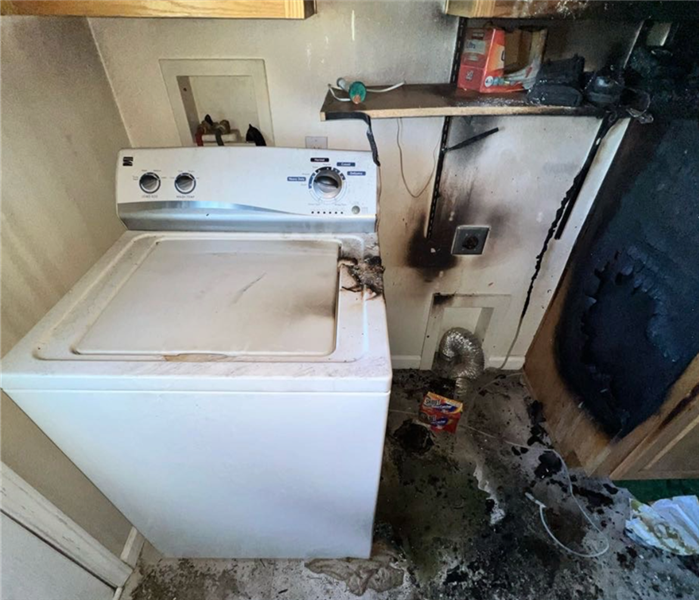 SERVPRO of Auburn/Enumclaw performing fire restoration services to a residential client.
SERVPRO of Auburn/Enumclaw performing fire restoration services to a residential client.
At SERVPRO of Lacey, we understand that prevention is key when it comes to protecting your home. Did you know that the accumulation of lint in a dryer exhaust system is one of the leading causes of dryer fires? This risk increases during the colder months when heavier clothing and bedding are in rotation. Fortunately, regular maintenance and proper tools can help homeowners keep their dryer systems safe and efficient.
Tools and Tips for Dryer Maintenance
1. Vent Pipe Cleaning Rods
Cleaning rods with circular brush attachments are great for clearing lint buildup from dryer vent tubing. These rods come in various styles, including:
- Manual rods for straightforward cleaning.
- Power drill attachments for added efficiency.
- Extended brush heads for deeper reaches.
To clear a duct, you may need to remove and reinsert the rod several times. If a rod isn’t available, a vacuum attachment can help remove lint near the dryer end of the tubing.
2. Long Wire Brush
Exterior vents are often overlooked but are just as important. A long wire brush is excellent for removing lint blockages at the vent’s exit point. If blockages persist or the system hasn’t been cleaned in a while, professional help may be necessary.
3. Firm-Bristled Nylon Brush
The lint trap inside your dryer is your first line of defense. Empty it by hand after every load and give it a deeper clean using a firm-bristled nylon brush every six months—or more often if needed.
Annual Professional Cleaning
While regular at-home maintenance is crucial, scheduling an annual professional dryer duct cleaning ensures that the entire system is clear of lint and functioning optimally.
If despite your best efforts, a fire does occur in your home, SERVPRO of Lacey is Here to Help®. Our fire damage restoration team is ready to assist with cleanup, repair, and rebuilding, so you can get back to your routine quickly and safely.
Protect your home—stay proactive with your dryer maintenance.
Restoring Your Belongings: The Importance of Content Cleaning in Fire Damage Restoration
4/5/2023 (Permalink)
A fire in your home or office can be devastating, causing significant damage to the structure and contents of the building. When dealing with fire damage, one of the most critical tasks is content cleaning. Content cleaning refers to the process of cleaning and restoring the items within the property that have been affected by smoke and fire damage. This is an essential step in the fire damage restoration process, and it requires specialized knowledge and expertise.
The first step in content cleaning is to assess the extent of the damage. This involves a thorough inspection of all items in the property to determine the level of smoke and fire damage they have sustained. Some items may be salvageable, while others may need to be disposed of due to the severity of the damage. Once this assessment is complete, the cleaning process can begin.
The cleaning process involves several steps, including debris removal, cleaning, deodorizing, and restoration. Debris removal involves the removal of any damaged items that cannot be salvaged. Cleaning involves the use of specialized equipment and cleaning agents to remove soot and smoke residue from the items. Deodorizing involves the use of specialized deodorizers to remove any lingering smoke odors from the items. Finally, restoration involves repairing or restoring any damaged items that can be salvaged.
One of the challenges of content cleaning is that different items require different cleaning methods. For example, fabrics and textiles require a different cleaning process than electronics or wood furniture. This is why it's important to work with a professional content cleaning company that has experience with fire damage restoration.
Another challenge of content cleaning is that smoke and soot can penetrate deeply into the fibers and surfaces of items, making them difficult to clean. This is why specialized equipment and cleaning agents are required to remove the smoke and soot effectively. A professional content cleaning company will have access to this equipment and will know how to use it properly.
In addition to content cleaning, fire damage restoration also involves structural cleaning and restoration. This includes repairing or replacing damaged walls, floors, and ceilings, as well as addressing any water damage that may have occurred due to firefighting efforts.
In conclusion, content cleaning is a critical part of the fire damage restoration process. It involves the cleaning and restoration of the items within the property that have been affected by smoke and fire damage. This process requires specialized knowledge and expertise, and it's important to work with a professional content cleaning company to ensure that the job is done correctly. With the right team of professionals on your side, you can recover from fire damage and get back to your normal life as soon as possible.
What can be salvaged after a House Fire?
2/8/2023 (Permalink)
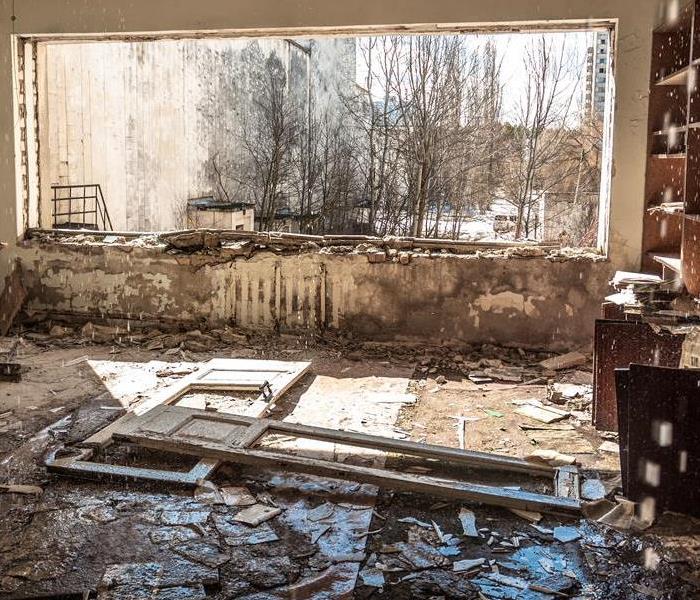 When you need professional help after a fire, give SERVPRO a call!
When you need professional help after a fire, give SERVPRO a call!
When the fire department leaves the scene after putting out a house fire, it’s tempting to think that your property is salvageable. However, even if the flames have been extinguished and the smoke cleared away, smoke and soot damage can still be an issue.
What to do after a house fire in Washington
If you have experienced a house fire, the first thing to do is call your insurance company. After accessing the damage it is time for a professional to come out to determine the loss and what can be salvaged from it. Only then should you start trying to clean up after a fire in Washington.
It is important for homeowners to keep their area safe and secure while waiting for professionals to arrive. As the professionals arrive, the first thing they will do is access the property.
Smoke and Soot Damage
Smoke and soot damage is the most common form of fire damage. It can be caused by a number of things, including, burning wood, paper or other organic materials like upholstery. Smoke and soot damage can cause several problems for people who have suffered this type of fire loss. Smoke stains will turn walls black even after the fire has been put out.
Assessing the Damage
Assess the damage. Take photos of everything that was damaged by fire, including walls, ceilings, furniture and appliances. Document all of your belongings so you can make an insurance claim later on if necessary (i.e., serial numbers for electronic equipment). Keep a record of any insurance claims or repair estimates as well as receipts for items purchased after the fire occurred.
Personal items
As you are sifting through the remains of your home, you may be wondering what can be salvaged. The good news is that there are a few things that can be cleaned and restored to their original condition. Personal items like photos, jewelry, or other valuables are especially important to salvage because they aren’t easily replaced if lost in the fire.
It’s best for these items to be cleaned by hand rather than using machines like washing machines or dryers because this will help preserve their integrity. You can also use gentle detergent on them without causing damage, but avoid harsh chemicals such as bleach or ammonia-based cleaners when cleaning these items.
The Restoration process
The restoration process depends on how extensive the damage is. In some cases, it may be necessary to remove all damaged items from the home and replace them with new items. This can be an expensive proposition and should be considered carefully before moving forward with this option.
If you don't have a lot of money or if you feel that removing everything would take too long, consider hiring professional cleaning services to do the job for you. They will know what kinds of chemicals should be used to clean different surfaces and materials so that they come out looking as good as new again!
Cleaning Water-Damaged items
As soon as you can, remove items that have been exposed to the fire and water damage. Use a wet/dry vacuum or clean mop to pick up water-damaged items. If you don't have access to these, use plastic bags and paper towels to clean up the mess on your floor or carpeting.
Use a sponge with mild detergent (like dish soap) and warm water to clean any nonporous materials. Rinse with clean water and dry thoroughly with paper towels or let air dry in the sun if possible (this will take days).
Nonporous materials include metal, glass, stone and ceramic surfaces—in other words, anything made of rock or glass!
Cleaning Smoke-Damaged items
You can start cleaning your items as soon as you can safely do so.
- Vacuum each item to remove any loose ash or soot and avoid spreading it around. Use a soft brush to loosen any charred debris that is stuck on the item, then vacuum again to pick up the debris.
- Wash items in the washing machine using cold water and mild detergent, then dry them in the dryer on low heat. If you don't have access to a washing machine or dryer at home, take your clothes and linens to a laundromat or consider donating them directly after they've been cleaned at home.
- Use dehumidifiers in rooms where there was heavy smoke damage and fans in other areas of your house until all traces of smoke are removed from these spaces.
When the fire department leaves, it’s time to contact your insurance company and find professional help.
When the fire department leaves, it’s time to contact your insurance company and find professional help. A professional cleaning service will give you an accurate assessment of what can be salvaged after the fire.
The best way to deal with the aftermath of a fire is to get help from professionals who can give you an accurate assessment of what can be salvaged. The insurance company will also send their own team of experts to assess the damage and make recommendations on how best to proceed.
Advice on Fire Safety for Your Valuable Items
1/9/2023 (Permalink)
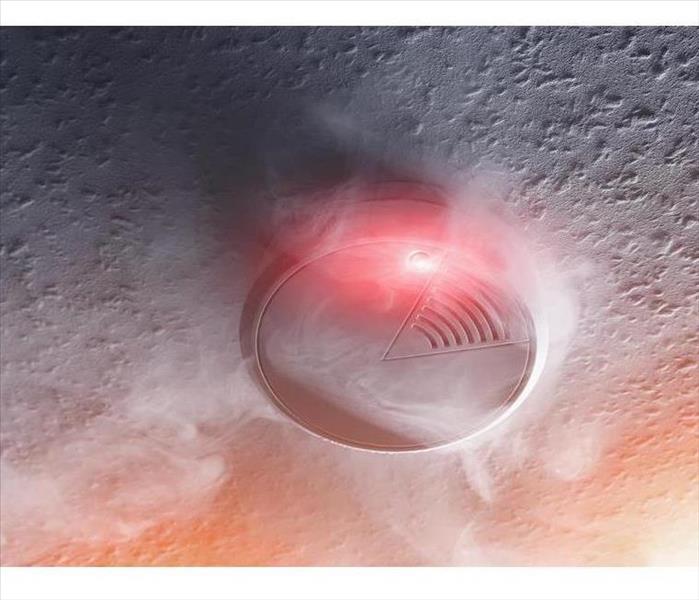 Install a working smoke detector
Install a working smoke detector
Advice on Fire Safety for Your Valuable Items
If you have valuable items in your home, you may be worried about what would happen to them in the event of a fire. It's only natural to want to protect your valuables against damage or loss, and there are steps that you can take to do just that. Here are some tips for protecting your home and possessions against fire damage.
Keep an Inventory
Keeping track of your valuables can be as simple or as detailed as you want it to be. If you're just starting out, take photos of all the items and save them in a folder on your computer or phone. Then, make a list of every item and include photos and serial numbers (if possible). This is especially important if any items were gifts from family members or friends—you'll want their sentimental value documented so that you don't lose track of who gave them to you.
You can also use spreadsheets for this process; some people find it easier or more fun to keep track of their stuff by using Excel or Google Sheets to create lists, categories, and checklists. Many apps exist that let users keep accurate records of their belongings; we recommend Evernote (which also offers two cents off per gallon when it's used at BP stations) because it lets users scan barcodes into the system so they don't have to type everything manually!
Make Sure Your Home is Protected From Fire
You can help your home protect you by taking the following steps:
- Install a working smoke detector.
- Have an escape plan in place and be sure to have a meeting place outside of the building.
- Buy a fire extinguisher that suits your needs and stick it somewhere easy to reach in case of emergency, like near the kitchen or close to any pets' crates.
- Keep a first aid kit handy for minor cuts, scrapes, burns and bruises that may result from firefighting activities.
- Keep clutter under control in rooms where it collects (like closets) so that if there is an outbreak of flames due to an accident or lightning strike nearby, they will be able to move freely through areas without having too many obstacles blocking their way out through doorways--and away from danger!
Get Your Valuables Appraised
It is important to get an appraisal before a fire or other disaster. You will want to be able to discuss the value of your possessions with your insurance company so that you can receive proper coverage. If you hire a professional appraiser, they will be able to help determine the value of both individual items and collectibles as well as whole collections. You can also perform this task on your own if you are particularly knowledgeable about antiques and collectibles in general. It's never too early to start thinking about how best to prepare for disaster recovery!
Take Photos of Your Valuables
When you take photos of your valuables, it's not just about making sure that when you put down a book to go look something up online, that you don't forget what exactly made this book so precious to begin with. It's also about helping yourself remember the stories behind each item—and even more than that, it helps others understand why these things matter.
Store Your Important Documents Digitally
With traditional paper documents, you have a range of options for safety. You can store them in a fireproof safe, but that doesn't do you much good if they're destroyed by water or smoke, or if the safe itself is damaged. You could also store them in a secure cabinet with a lock, but this isn't always practical depending on where you live (for example, many apartments don't allow access to their cabinets).
If your documents are important enough to keep on paper rather than digitize them and save them online somewhere else (whether it's an online storage service like Dropbox or Google Drive), then one way to protect them from fire would be to scan or digitize the documents yourself. This way there is no worry about damage from water or smoke inhalation when taking out the saved files after a fire has been extinguished.
Another option is using cloud storage services such as Dropbox and Google Drive which allows users easily share files between different devices without needing any technical knowledge whatsoever! This means once something gets uploaded onto these platforms they're automatically backed up elsewhere so even if something happens at home then someone else could get access via another device anywhere else around the world.
Keep Valuables in a Safe Place
It is important to keep your jewelry and other valuables in a safe place. To ensure that they are protected from both fire and water damage, consider storing them in a safe or drawer.
Keep your valuables away from fireplaces and radiators, as well as windows, doors, and vents. If you have children at home who might be tempted to play with these items when they're not supervised, it's best if you store them out of reach or lock them up somewhere only an adult can access them.
A Few Steps to Take Now
A fire can be devastating, and it's important to take the steps necessary to protect your valuables.
- Make sure your valuables are insured. If you don't already have coverage, talk to your insurance provider about adding it as soon as possible. A good policy will cover lost items due to a fire, but only if they're properly protected beforehand.
- Take photos of all of your possessions, including family heirlooms or sentimental items that might be harder for an insurer to value on their own (such as jewelry). Photos will help you remember what was lost in case there's any confusion later on down the road.
The best way to protect your valuables is by taking the steps as soon as possible and making sure that you have a plan in place for what happens if your home does catch on fire. If you don’t have insurance, then there are still things that can be done to minimize damage from fires such as keeping valuables out of reach of children or pets who could easily knock them over while playing around the house.
Tips for Making a Claim After a Fire
8/24/2022 (Permalink)
 The insurance company is one of the first calls you make when a fire has destroyed your home.
The insurance company is one of the first calls you make when a fire has destroyed your home.
After A Fire, Here Are Some Pointers On How To File A Claim
When a fire damages your home in Tenino, WA you may not be in the right frame of mind for making good decisions. The decisions you make regarding your fire insurance claim, however, can affect how much of the fire restoration is covered by your insurer. Here are three tips to help you think through the process rationally and hopefully get the settlement you need to restore your home.
1. Call Insurance Company
One of the first calls you make after a fire has ravaged your home is to the insurance company. Timely reporting is essential to getting your claim processed and approved. As soon as the company receives your call, an assessor can be sent to review the damage and substantiate your claim.
2. Call Professional Restorers
After a fire, your home is likely permeated with the odor of smoke and soot damage. Firefighters probably had to use a lot of water to put out the fire, resulting in water damage as well. Certified fire restoration specialists offer both smoke cleaning and water damage remediation to fix the problems in your home. They often offer board-up services to secure the house during the restoration process, and they can give you an estimate on what the repairs are going to cost, which can back up your claim with the insurance company.
3. Don't Touch Anything
Once you have made the necessary calls and the waiting begins, you may be tempted to start cleaning up the damage yourself. Fight the urge to do so. The insurance agent that comes to assess the damage needs to see it as it is, and without the knowledge and skills of the specialists, you may cause more damage. While you wait, it is a good idea to take pictures of the damage as long as it is safe to do so.
You may feel powerless when your home suffers fire damage. By calling the appropriate professionals and waiting on their guidance, however, you can speed up the fire restoration process.
How Lightning Affects a Home
4/11/2022 (Permalink)
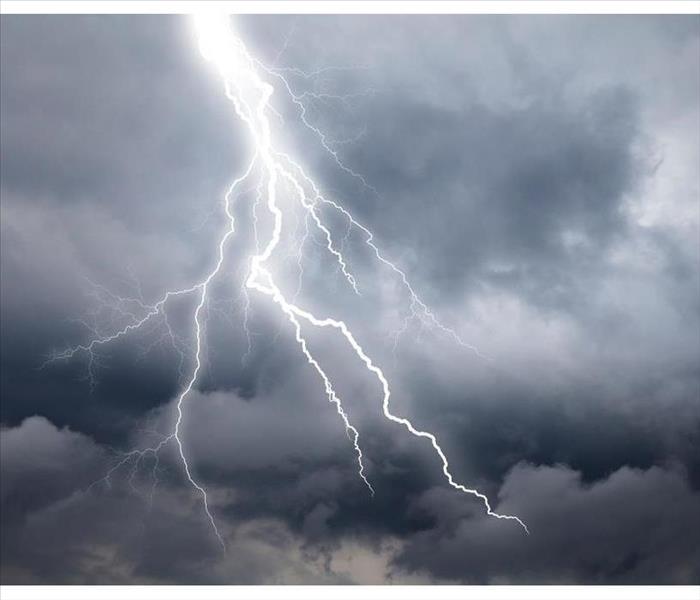 The most terrifying aspect of severe torment is not knowing when or where lightning will strike. If you hit your house, you may start a fire.
The most terrifying aspect of severe torment is not knowing when or where lightning will strike. If you hit your house, you may start a fire.
How Does Lightning Affect A House?
If you live in Yelm, WA, you know you will experience a few extreme thunderstorms every year. While most of the thunderbolts just light up the sky, they can hit your home. The worst part of a severe storm is never knowing when or where that bolt may come down. If it hits your home, the power behind it causes instant damage, including a potential house fire.
The Effects of Lightning
The two most common damage it causes is a power surge or lighting fire.
Surges: These are the most common issue that arises. Considering that a bolt may have tens of millions of volts and a standard home uses around 220 volts, your electrical system can’t handle the power. Any items, including appliances, that are plugged in may be damaged. There are surge protectors on the market that can help minimize the damage.
Lighting Fire: A bolt from the sky is extremely hot, even up to 50,000 degrees. No matter how sound your home may be, those kinds of temperatures are bound to cause some damage. In many cases, the fire may start in the attic or upstairs area. Surprisingly, the damage isn’t always immediately noticeable. Since it penetrates the home, flames could be spreading behind walls or other hidden areas.
After a Strike
Even if you don’t see visible signs of trouble, it is imperative to call emergency responders to inspect the home. They will have the tools to detect hidden dangers. Along with ensuring the home is safe, it is important to do the following:
- Verify circuit breakers, outlets and light switches are functioning properly.
- Use a resistance tester to ensure the wiring is not damaged.
- Inspect plumbing fixtures and pipes for leaks.
- Check that water supply lines don’t have any extra pressure or leaks.
If the strike results in a fire, contact your insurance company and a fire damage and restoration specialist as soon as possible to minimize the damage.
While a lighting fire may seem rare, the odds are higher than many people think. Knowing that it can happen and being prepared for anything is key to easing the unexpected situation.
How To Clean a Dryer Exhaust
2/3/2022 (Permalink)
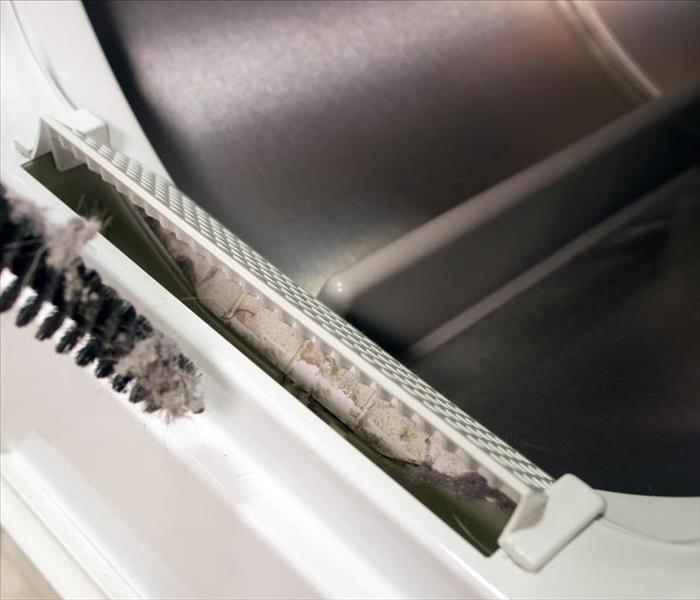 SERVPRO of Lacey can take care of your fire damage restoration and cleanup needs in Olympia, WA, home or business
SERVPRO of Lacey can take care of your fire damage restoration and cleanup needs in Olympia, WA, home or business
Cleaning A Dryer Exhaust
The accumulation of lint in a dryer exhaust can lead to a dryer fire. Thick winter clothing and bedding tends to increase seasonal buildup. Homeowners should thoroughly clean a dryer exhaust at least once a year and perform regular maintenance to keep the lint trap, vent tube, and exterior vent clear. It is not difficult to reduce the risk of a lint fire with the right tools.
Vent Pipe Cleaning Rods
Vent pipe cleaning rods have long attachments with circular brushes. These rods can clear lint out of a significant portion of dryer vent tubing. There are several styles of cleaning rods to choose from:
- Manual rods
- Rods with power drill attachments
- Rods with extended brush heads
It may be necessary to remove and reinsert a cleaning rod several times to clear a duct. If you do not have a cleaning rod, try using a vacuum attachment to remove at least some lint from around the dryer end of vent tubing.
Long Wire Brush
A long wire brush can be helpful for extracting lint from an exterior vent. A blockage at any point of the exhaust system can increase the risk of a lint fire. Professional assistance may be necessary to clean out the entire duct.
Firm-Bristled Nylon Brush
Limit the amount of lint that ends up in the exhaust by keeping the dryer lint trap clear. Clean the filter by hand after each load. Use a nylon brush with firm bristles to remove impacted lint from the screen every six months or more frequently if necessary.
A homeowner can use all of these tools to avoid a lint fire. It is advisable to schedule a professional dryer duct cleaning about once a year. If a fire breaks out in the laundry room of a residence in Olympia, WA, a fire damage restoration service can help homeowners clean and rebuild.

 24/7 Emergency Service
24/7 Emergency Service





